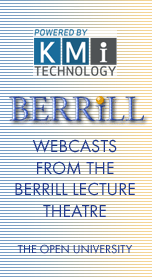
The Clockwork Universe - adventures in time-domain astrophysics, Professor Andrew Norton.
The Universe runs like clockwork (mostly) according to the law of gravity first described by Isaac Newton over 300 years ago. Planets orbit stars, stars orbit other stars, and planets and stars spin on their axes, regularly repeating their motion, cycle after cycle. In this inaugural lecture, OU Professor of Astrophysics Education, Andrew Norton, will describe some of his research into variable stars. The talk will be illustrated throughout with animations that show how observations of the brightness of stars, and of their spectra, can reveal hierarchical multiple eclipsing stars, pulsating stars, and rapidly rotating white dwarfs and neutron stars. The talk will also introduce a citizen science project, hosted by the Zooniverse website, where volunteers can classify over a million lightcurves from the SuperWASP project, and discover new variable stars for themselves.
Near-Earth Asteroids: A matter of life and death?, Professor Simon Green.
Asteroids, which mostly orbit between Mars and Jupiter, are the remaining fragments of bodies which never coalesced into planets and retain material that has been relatively unaltered since the earliest stages of the formation of the Solar System. Near-Earth asteroids (NEAs) provide a link between this primordial reservoir and the meteorites we collect on the Earth and are the most accessible Solar System objects for space missions. NEAs pose a potential threat to life on Earth, being implicated in past mass extinctions, but may also have created the ecological space for humans to evolve. Professor of Planetary and Space Science, Simon Green, has studied NEAs through ground-and space-based observations since his discovery of the unusual asteroid (3200) Phaethon in 1983. In recent years he has been involved in studies and proposals for a range of space missions to NEAs. In this inaugural lecture, he will focus on recent progress and challenges for missions to prevent a potential future asteroid impact on the Earth.
To post a question during this event, click on the button to the left of this page or link below. We very much hope you will be able to attend what promises to be an inspiring event and have your say. |
